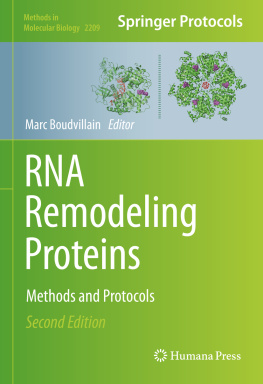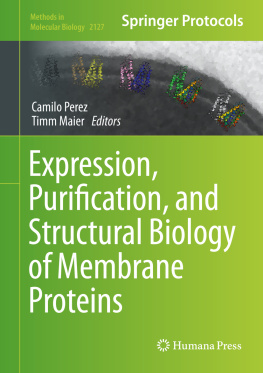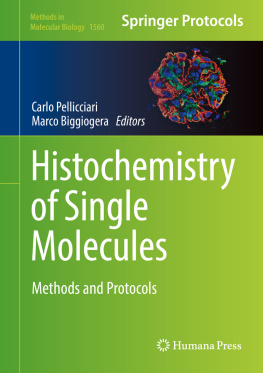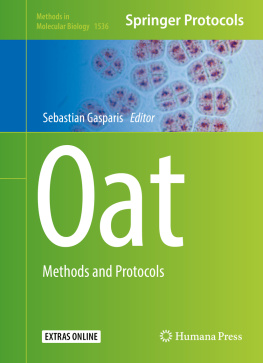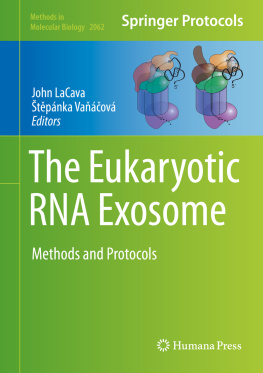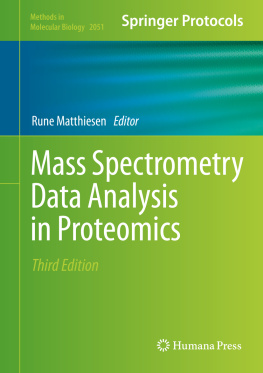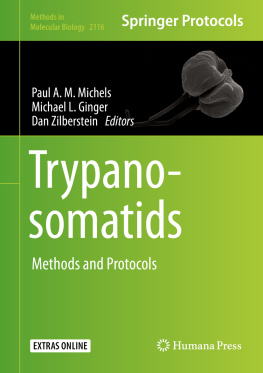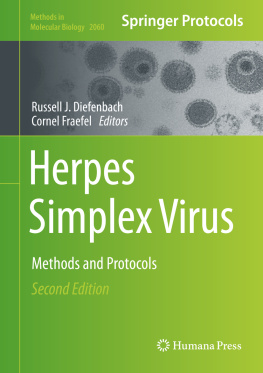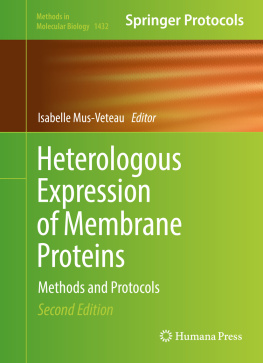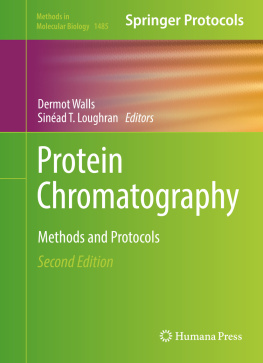Volume 2209
Methods in Molecular Biology
Series Editor
John M. Walker
School of Life and Medical Sciences, University of Hertfordshire, Hatfield, Hertfordshire, UK
For further volumes: http://www.springer.com/series/7651 For over 35 years, biological scientists have come to rely on the research protocols and methodologies in the critically acclaimed Methods in Molecular Biology series. The series was the first to introduce the step-by-step protocols approach that has become the standard in all biomedical protocol publishing. Each protocol is provided in readily-reproducible step-by step fashion, opening with an introductory overview, a list of the materials and reagents needed to complete the experiment, and followed by a detailed procedure that is supported with a helpful notes section offering tips and tricks of the trade as well as troubleshooting advice. These hallmark features were introduced by series editor Dr. John Walker and constitute the key ingredient in each and every volume of the Methods in Molecular Biology series. Tested and trusted, comprehensive and reliable, all protocols from the series are indexed in PubMed.
For over 35 years, biological scientists have come to rely on the research protocols and methodologies in the critically acclaimed Methods in Molecular Biology series. The series was the first to introduce the step-by-step protocols approach that has become the standard in all biomedical protocol publishing. Each protocol is provided in readily-reproducible step-by-step fashion, opening with an introductory overview, a list of the materials and reagents needed to complete the experiment, and followed by a detailed procedure that is supported with a helpful notes section offering tips and tricks of the trade as well as troubleshooting advice. These hallmark features were introduced by series editor Dr. John Walker and constitute the key ingredient in each and every volume of the Methods in Molecular Biology series. Tested and trusted, comprehensive and reliable, all protocols from the series are indexed in PubMed.
RNA Remodeling Proteins
Methods and Protocols
2nd ed. 2021

Logo of the publisher
Editor
Marc Boudvillain
Centre de Biophysique Molculaire, CNRS UPR4301, Orleans Cedex 2, France
ISSN 1064-3745 e-ISSN 1940-6029
Methods in Molecular Biology
ISBN 978-1-0716-0934-7 e-ISBN 978-1-0716-0935-4
https://doi.org/10.1007/978-1-0716-0935-4
Springer Science+Business Media, LLC, part of Springer Nature 2021
This work is subject to copyright. All rights are reserved by the Publisher, whether the whole or part of the material is concerned, specifically the rights of translation, reprinting, reuse of illustrations, recitation, broadcasting, reproduction on microfilms or in any other physical way, and transmission or information storage and retrieval, electronic adaptation, computer software, or by similar or dissimilar methodology now known or hereafter developed.
The use of general descriptive names, registered names, trademarks, service marks, etc. in this publication does not imply, even in the absence of a specific statement, that such names are exempt from the relevant protective laws and regulations and therefore free for general use.
The publisher, the authors and the editors are safe to assume that the advice and information in this book are believed to be true and accurate at the date of publication. Neither the publisher nor the authors or the editors give a warranty, expressed or implied, with respect to the material contained herein or for any errors or omissions that may have been made. The publisher remains neutral with regard to jurisdictional claims in published maps and institutional affiliations.
This Humana imprint is published by the registered company Springer Science+Business Media, LLC part of Springer Nature.
The registered company address is: 1 New York Plaza, New York, NY 10004, U.S.A.
Preface
Five years after the first edition of the Methods in Molecular Biology volume on RNA remodeling proteins, we have the pleasure to provide the scientific community with a new collection of cutting-edge approaches devoted to the study of this seminal class of proteins. The tremendous progress of RNA biology has confirmed the obvious: yes, RNA functions rest on specific structures and partnerships with proteins. The often complex and highly dynamic ballet of RNAprotein interactions usually starts as soon as the nascent transcript emerges from the transcription machinery. Then, throughout the RNA life cycle, proteins bind and release the RNA chain, remodeling RNA structures and interactions to drive the maturation, quality control, transport, storage, utilization, or destruction of RNA as a function of cellular needs.
Different classes of proteins contribute to remodel RNA and RNAprotein complexes. The case of NTP-independent RNA chaperones has been addressed in the 2015 edition of this book and in a new, separate volume of the series (RNA chaperones, volume 2106; Heise, Tilman, Ed.). Here, we more specifically focus on proteins that use the energy derived from NTP cofactor (RNA helicases) or RNA phosphodiester backbone (ribonucleases) hydrolysis to remodel RNA or ribonucleoprotein structures. RNA helicases trigger conformational rearrangements but do not modify the RNA chain itself, whereas ribonucleases irreversibly alter the structures of their RNA substrates in maturation or decay pathways.
Both RNA helicases and ribonucleases are present in all kingdoms of life where they play key physiological roles and often represent valuable pharmacological targets. In this book, experts of the field share their most recent protocols and bench tricks to dissect the mechanisms of these important factors in vitro and in vivo. Following a general trend of the field, the book also contains protocols to better identify the physiological targets, cofactors, and biological functions of RNA remodeling proteins and describes current attempts to discover drugs able to control the functions of RNA helicases in various pathological contexts.
This book is the result of a collective effort and I would like to thank all authors for their enthusiastic contributions and suggestions. I also would like to thank John Walkerthe Series editorfor his guidance throughout the process of assembling and editing the book manuscript.
Marc Boudvillain
Orleans Cedex 2, France
Contents
W. Luke Ward and Rick Russell
Martina Valentini and Patrick Linder
Yosser Zina Abdelkrim , Josette Banroques and N. Kyle Tanner
John C. Marecki , Alicia K. Byrd and Kevin D. Raney
Emmanuel Saridakis and Franck Coste
Frank Wien , Frdric Geinguenaud , Wilfried Grange and Vronique Arluison
Jaroslav Fulneek and Karel ha
Linda Krause and Dagmar Klostermeier
Michael R. Lawson and James M. Berger
Isabelle Simon and Marc Boudvillain
Ewan K. S. McRae , Steven J. Dupas , Negar Atefi and Sean A. McKenna
Huijuan You , Yu Zhou and Jie Yan
Eva Absmeier and Markus C. Wahl

